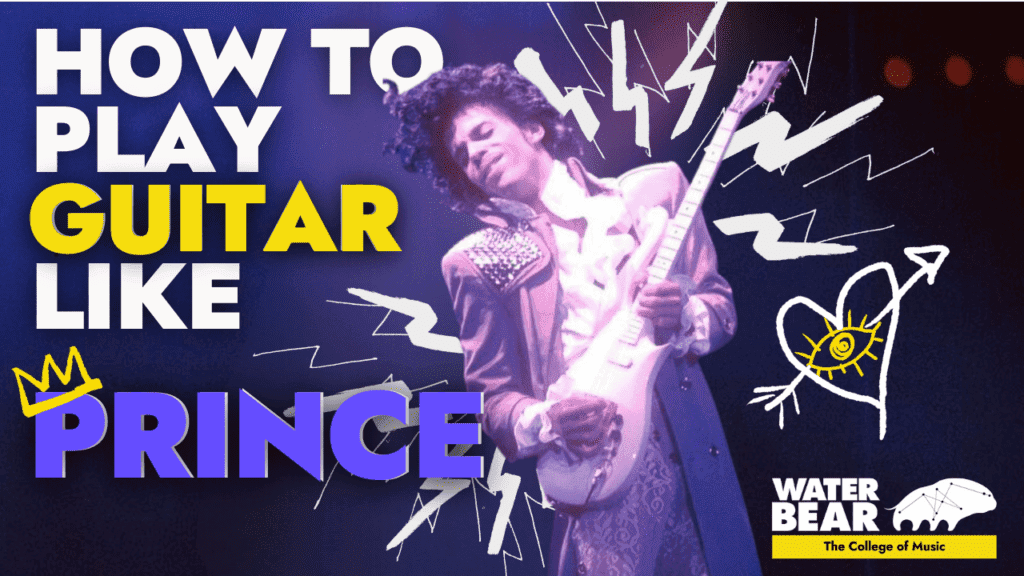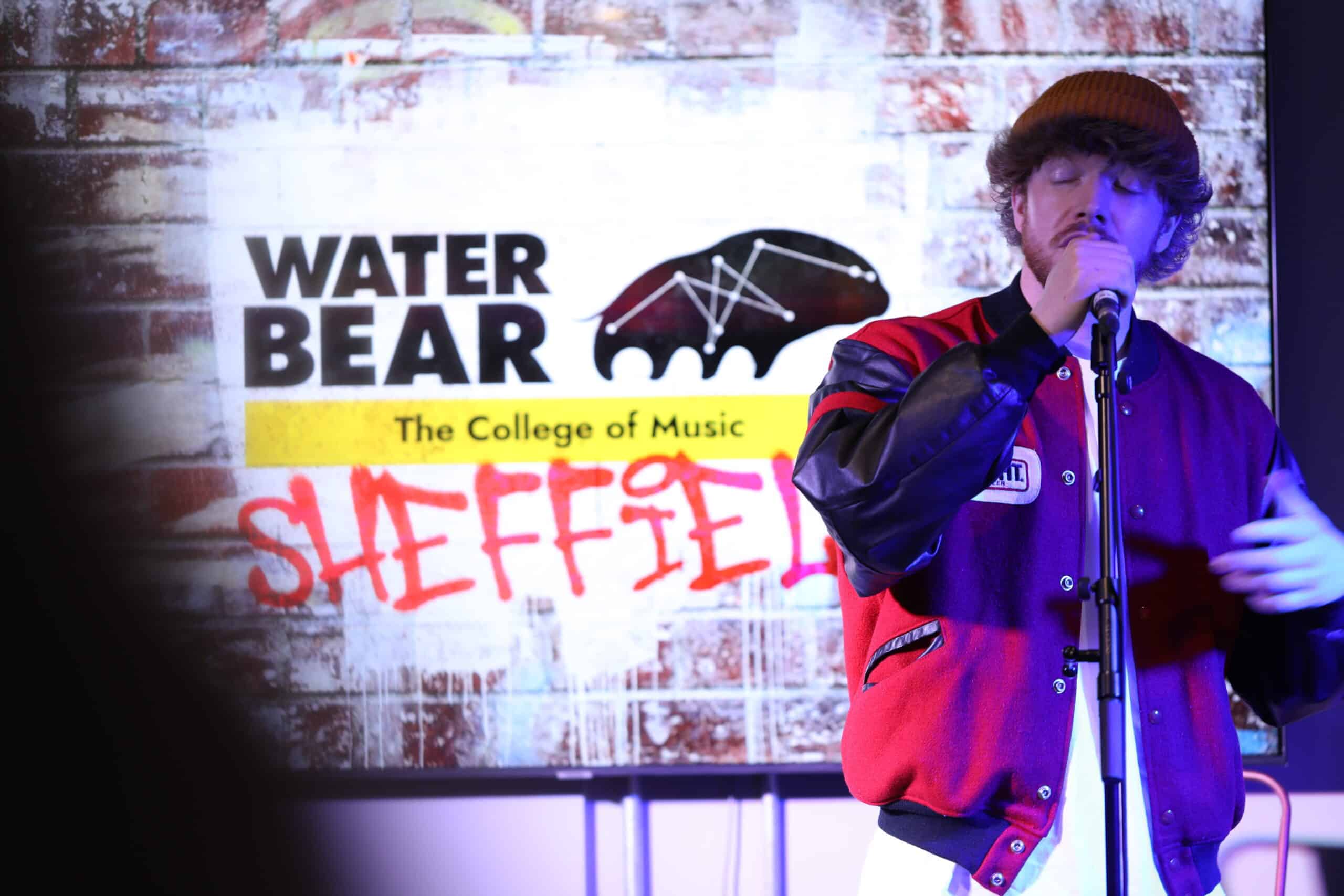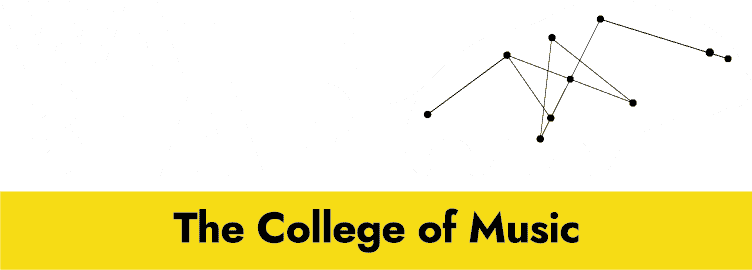JOIN US SEPTEMBER 2024 - APPLY TODAY OR BOOK YOUR PLACE ON ONE OF OUR OPEN DAYS IN BRIGHTON OR SHEFFIELD. UCAS CLEARING IS NOW OPEN.
JOIN US SEPTEMBER 2024 - APPLY TODAY OR BOOK YOUR PLACE ON ONE OF OUR OPEN DAYS IN BRIGHTON OR SHEFFIELD. UCAS CLEARING IS NOW OPEN.

The year is 1984, you watch Dynasty then head to the cinema. There, the glorious sound of one of the greatest guitar solos of all time fills your ear, how does he do it? How can I learn from this? How can I play like Prince?
Well you don’t need to ‘go crazy’, do a montage to ‘When Doves Cry’ or even have a puppet monkey reinforcing that “life is a b**ch” to emulate the Purple one. The legendary performer, actor and creative powerhouse that was Prince had mastered twenty seven instruments and released his debut album at the tender age of twenty. Truly in a class of his own, his career spanned from 1978 to his death in 2016.
His musicality was unmatched, influenced heavily by funk and disco, as evident in his first records, his music grew over the years to incorporate hip hop, rock, punk and jazz elements. Along with the eclectic and intense nature of the music, the lyrics often dealt with themes of sexuality, desire, troubled relationships and social issues. As described by a biographer, “The whole thrust of Prince’s art can be understood in terms of a desire to escape the social identities thrust upon him by simple virtue of his being small, black and male.”
To bring us back to topic, the same intensity and conviction can be heard in every note he struck. Playing since the age of 7, he was a very accomplished guitarist in all areas of technique, theory and feel. He taught himself at first, the batman theme being the first tune he worked out (ironically a franchise he would later work on thanks to Tim Burton - check out the track Electric Chair for a funk rock fret-ripping rollercoaster), he later got lessons from a local gigging guitarist. His understanding of music and immense talent can be heard in all his recordings and live performances, some we’ll have a look at here and see what we can glean from the mercurial genius of Prince.
Let’s start with arguably his most famous ballad, although one that ironically he probably plays least on and which isn’t funk. The track has a near legendary intro, which along with all the rhythm parts is played on the recording by The Revolutions Wendy Melvoin. The chords are fairly simple, a I-VI-V-IV progression with some colourful extensions, Bb(add9)/D to a Gmin11 to a F(add9) and a Eb(add9).
Although these chords can present a challenge at first with big stretches and fast shifts required, especially to articulately fret the Eb in its full root A string voicing. Once nailed, there is nothing to fear as the verses and the chorus share the same chords just in a different order. Like in much of Princes playing, the progression and number of chords is rather tame and commercially viable, it’s the colourful extensions that add the melancholy and emotion, and is an idea worth stealing when writing your own progressions.
The fills and solo on the track are delivered with conviction and passion, epitomising Prince’s lead playing. The solo takes place in Bb major, same as the rest of the song, so G minor pentatonic is a good place to start. The solo starts with a loose and wild double stop idea using a C and an F which comes in where the break occurs in the chorus, juxtaposing the silence or usual BV delivery of the song’s title.
The rest of the solo is largely improvised changing from performance to performance, some melodic devices stay the same though, like the famous melody at around 5:40 (in the official music video) which uses the 1st, 7th and 2nd of Bb, reminiscent of the Jurassic park theme. Using motifs like this in your playing is a great way to add coherence to solos, create something people can sing along with and add more emphasis when you do decide to add a faster passage. The note choice of the motif also helps, the 7th and 2nd are very emotional notes, especially when put over the chord progression, which uses Bb(add9). The same notes are used in the faster passages of the solo when Prince employs the root 15th fret shape of G natural minor, for rapid repeating licks and runs, it creates a sophisticated descending sound, like falling rain, purple rain.
A great live recording, the first actual recording of the song, can be found here, it shows what Melvoin plays and Prince playing ideas that would help form the recorded version.
To keep this article from becoming a novel, we’ll discuss Prince’s funk mastery by just looking at these two tracks and see what we can add to our groove arsenal.
One of the Purple ones most recognisable tracks and probably the most famous use of an Adom9, ‘Kiss’ is a masterclass in funk minimalism, showing that a tight drum groove and attitude can go a long way. The song uses the I, IV, V chords of the key of A, using dominant voicings throughout and pausing in the choruses to emphasise that A dominant 9 chord. There is slight variation with the bridge where the song moves to a 14th fret E9. The track would change regularly live, so it’s a great piece to learn and practice your funk rhythm. The chords are simple and the feel makes it, try playing the rhythm part with ‘chickas’ or without and see what sounds better.
Almost an evolution of these tight funk ideas is ‘Lady Cab Driver’, the song is mainly one repetitive groove around B minor 7 and E minor 7. The song has plenty of space for improvisation and includes a simple yet pretty melodic idea that uses E min pentatonic with the added 2nd, reminiscent of some of the melodies in ‘Purple Rain’. The rhythm parts are very Nile Rodgers, cleanly executed with deftly placed ‘chickas’. Here is a great live version.
So what can you learn from Prince and use in your own playing? The biggest takeaway would be the value of a part. He was a master composer who understood every instrument and his guitar parts were always placed with purpose, he rarely or never overplayed. His rhythm parts utilised space and his lead playing balanced melody and flair. And remember, the bigger the venue, the less notes you need. A slightly out of tune unison bend played like Prince is worth a thousand notes.
Other tracks to listen to for more inspiration would be ‘Raspberry Beret’ for the funk intro, ‘Let’s Go Crazy’ for the two guitar solos and an exceptional live performance of ‘While My Guitar Gently Weeps’, linked here.
In terms of tone, here is the equipment the man himself used, with alternatives.
To find out more, check out our courses here.

- ‘Water bear’ is the common name for a Tardigrade.
- Tardigrades are micro creatures, found everywhere on earth.
- They are the most resilient creatures known.
- They can survive and adapt to their surroundings, even in outer space.
- Their resilience and ability to adapt and survive inspires us in everything we do. We love them.


WaterBear Education Ltd, Hanover House,
118 Queens Road, Brighton BN1 3XG, UK Map
Email: [email protected]
Tel: +44 (0) 1273 726230
WaterBear Sheffield, Unit 4, Gatecrasher,
49 Eyre Lane, Sheffield S1 4RB, UK
Email: [email protected]
Tel: +44 (0) 1143 992720

WaterBear Education Ltd, Hanover House,
118 Queens Road, Brighton BN1 3XG, UK Map
Email: [email protected]
Tel: +44 (0) 1273 726230
WaterBear Sheffield, Unit 4, Gatecrasher,
49 Eyre Lane, Sheffield S1 4RB, UK
Email: [email protected]
Tel: +44 (0) 1143 992720
- ‘Water bear’ is the common name for a Tardigrade.
- Tardigrades are micro creatures, found everywhere on earth.
- They are the most resilient creatures known.
- They can survive and adapt to their surroundings, even in outer space.
- Their resilience and ability to adapt and survive inspires us in everything we do. We love them.
